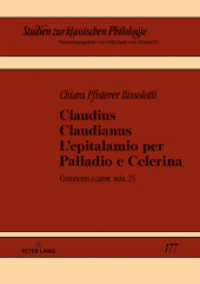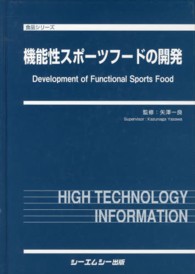- ホーム
- > 洋書
- > ドイツ書
- > Humanities, Arts & Music
- > Music
- > musical equipment
Description
(Text)
Pärts Mozart-Adagio (1992) für Violine, Violoncello und Klavier wurde für das Kalichstein-Laredo-Robinson Trio als Auftragswerk des Helsinki Festivals komponiert, wo es uraufgeführt wurde. Das Werk entstand zum Gedenken an Oleg Kagan, der ein Freund Pärts und einer der führenden Geiger Russlands war. Seine spezielle Affinität zu Mozarts Musik würdigt Pärt durch die Transkription eines der bewegendsten Klaviersonaten-Sätze des jungen Mozart, dem Adagio aus der Sonate in F-Dur, KV 280. Bei Pärts Bearbeitung handelt es sich weder um ein Arrangement noch um eine Collage. Auch nähert sich Pärt dem Original nicht spielerisch (wie noch im Falle seines Bach-inspirierten Werkes Wenn Bach Bienen gezüchtet hätte), sondern auf eine vorsichtige, ehrfurchtsvolle Art. Dabei halten sich Original-Mozart und Pärtsche Tintinnabuli-Elemente genau die Waage und lassen so eine Art spirituelle Begegnung zwischen 18. und 20. Jahrhundert entstehen. Der Komponist fügt dem Original eine kurze Einleitung hinzu, sowie ein Zwischenspiel und eine Coda und einen zurückgenommenen, fortdauernden 'Kommentar'. Der einleitende und der abschließende Rahmen bestehen aus dem allereinfachsten Material - Cello und Violine, die einzelne getrennte Noten in einem 'bescheidenen' Duett von Sekunden und Terzen spielen. Für den 'Kommentar' nimmt Pärt Mozarts bevorzugtes Intervall dieses Satzes, die Sekunde, und würzt seine Textur mit diesem dissonanten Klang. Während er den Verlust eines Freundes beklagt, scheint Pärt die Dissonanz zu gebrauchen, die Mozart selbst so ausgiebig verwendete und macht diese zu einem das ganze Stück über andauernden, unvermeidlichen Symbol des Schmerzes.
(Table of content)
Mozart-Adagio für Violine, Violoncello und Klavier (1992), rev. 2005)
(Text)
Arvo Pärt's Mozart-Adagio (1992) for violin, cello and piano was composed for the Kalichstein-Laredo-Robinson Trio on commission by the Helsinki Festival, where it was premiered. The piece is in memory of Oleg Kagan, who was a friend of Arvo Pärt's and one of Russia's leading violinists. Kagan had a special affinity with the music of Mozart and the composer memorialises the violinist by transcribing one of the most affecting movements of the youthful composer's piano sonatas, the Adagio from the Sonata in F Major, K. 280.
Arvo Pärt's Mozart-Adagio is neither an arrangement nor a collage. Pärt's approach to the original work is not a playful one (as it was with his Bach-inspired piece Wenn Bach Bienen gezüchtet hätte) - rather, it is cautious and respectful. Aspects of Mozart's composition and Pärt's Tintinnabuli style are in balance so that there emerges a spiritual encounter between the 18th and 20th centuries.
To the original, the composer adds a modest introduction, interlude, and coda, as well as a restrained and ongoing 'commentary'. The introductory and concluding frame consists of the simplest material - cello and violin playing discrete single notes in a 'humble' duet of seconds and thirds. For the 'commentary', the composer takes the interval of Mozart's preoccupation in this movement, the minor second and peppers the texture with this dissonant sonority. In lamenting the loss of a friend, Arvo Pärt seems to take the dissonance that Mozart uses so sparingly and makes this symbol of sorrow permeate, inescapably, the entire piece.
Instrumentation:for violin, cello and piano






